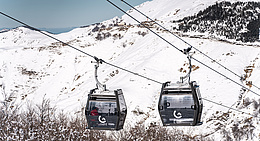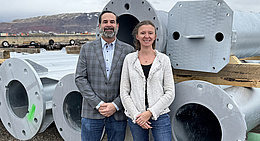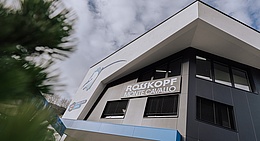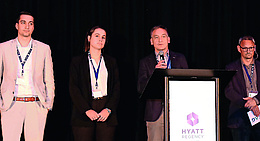People often ask me how to quickly come up with new and good marketing ideas for children and families. In fact there are various flexible methods available, such as Design Thinking and Lego Serious Play, that are ideal for stimulating creativity. They are also fun and usually very effective in generating ideas. One technique that I and the participants in my workshops particularly like is called Reverse Brainstorming. Instead of asking the group to come up with fantastic creative ideas, the process is literally turned upside down, and the group has to present the best way of not achieving the goals, to simply make a bad job of it and be sure of having a negative impact on customers, i.e. children and families, and driving them away.
A typical question in a Reverse Brainstorming exercise could be: “How can we make our offering so bad that kids and families find our products, services and the whole experience so awful that they never come back?”
What are the benefits of revers Brainstorming?
Especially for workshop groups that are really excited about their product or experience and are looking for new creative ideas, and also for groups that are already a bit burned out – that is to say, they feel like they’ve already applied their best ideas – this method is one of the best there is. It generates new, exciting and far-reaching ideas that would otherwise not be developed.
The mechanism behind the method: All negative ideas have a positive counterpart. So if you do exactly the opposite of what you consider negative, you will finish up with an idea that is a winner.
Let’s give it a try here and now, and take a look at the seven deadly sins of marketing for children and families. We begin with the horror scenario for every child and family.
First deadly sin: using baby language
Children should be addressed using baby talk as far as possible. After all, children are unfinished adults and cannot understand a lot of things. You have to make everything easy for them and express yourself in very simple sentences. Don’t worry about children who are older (8 to 12 years old) and make sure that they are also addressed in very simple language. Make sure you don’t take the children seriously, they are only children! Use simple graphics and the most garish colors possible. For children, you definitely don’t need marketing experts, storytellers or graphic designers with target group experience. You can do all that stuff yourself, because ... correct! They are only children.
Second deadly sin: treating girls and boys the same
Girls and boys are not that different. So just negate all the differences between the genders. Play as many competitive games as possible with the girls – after all, they need to learn to assert themselves! With the boys it is best to play creativity and board games or something with horses. That’s something they are bound to love.
Third deadly sin: preventing shared family experiences
When parents are on vacation, surely they deserve some time off from the kids! Wouldn’t it be best to offer all-day child minding so that parents can enjoy as much wellness as possible? Families certainly don’t want to do things together. So you definitely don’t need to provide any shared experiences. Who likes mystery hunts anyway? They only cost money!
Fourth deadly sin: not treating children as customers
Children – as we have already said – are just children. So they haven’t got any money of their own to spend. And they certainly don’t influence their parents’ vacation decisions; it’s still for mom or dad to decide what to do on vacation. It’s always been that way and always will be. Your marketing doesn’t have to take children into account at all.
Fifth deadly sin: doing without mascots
From the fourth deadly sin, it is a logical conclusion that you don’t need to specifically address the kids at all. There’s no need for a target-group approach with children’s figures and so on. So mascots, good storytelling and experiences for kids are just a waste of money.
Sixth deadly sin: giving the kids a diet with maximum sugar and fat
Healthy food for kids? What for?! They only want fries and candies. So it’s a good idea to reward kids with high-sugar treats at every opportunity, make the main dishes as high in fat as possible, and serve the most sugary dishes for dessert. Coca-Cola is the best drink for children! Mothers also definitely love this approach.
Seventh deadly sin: leaving the kids to their own devices
Kids are super creative and can entertain themselves with all kinds of materials. So why provide dedicated entertainment? It’s best to leave them to their own devices. Children’s activities should never be designed for different age groups or promote different skills. Nor do parents want their children to learn anything from their vacation activities! That’s what school is for!
Conclusion: Reverse Brainstorming – it´s worth a try !
As you can see, reverse brainstorming reveals some interesting attitudes and ideas on how it should certainly not be done! This leads – in a contrasting, positive mirror image – to suggestions and visions of how to keep your young guests happy. Why not give it a try? It is a really exciting and successful creativity technique that is lots of fun and always goes down well in teams and groups.
If you need more information about this method or about children and family marketing in general, please do not hesitate to contact us.
With our Animationsbox we also provide entertainment and training programs that will help you inspire your young guests.
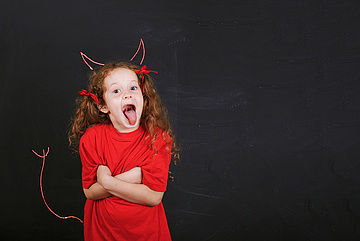
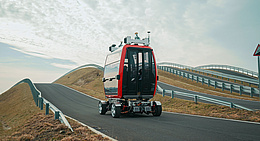

![[Translate to English:] (c) Doppelmayr](/fileadmin/_processed_/b/3/csm_85-ATW_Stechelberg-Muerren_Lauterbrunnen_CHE_001_6442c0520d.jpg)

